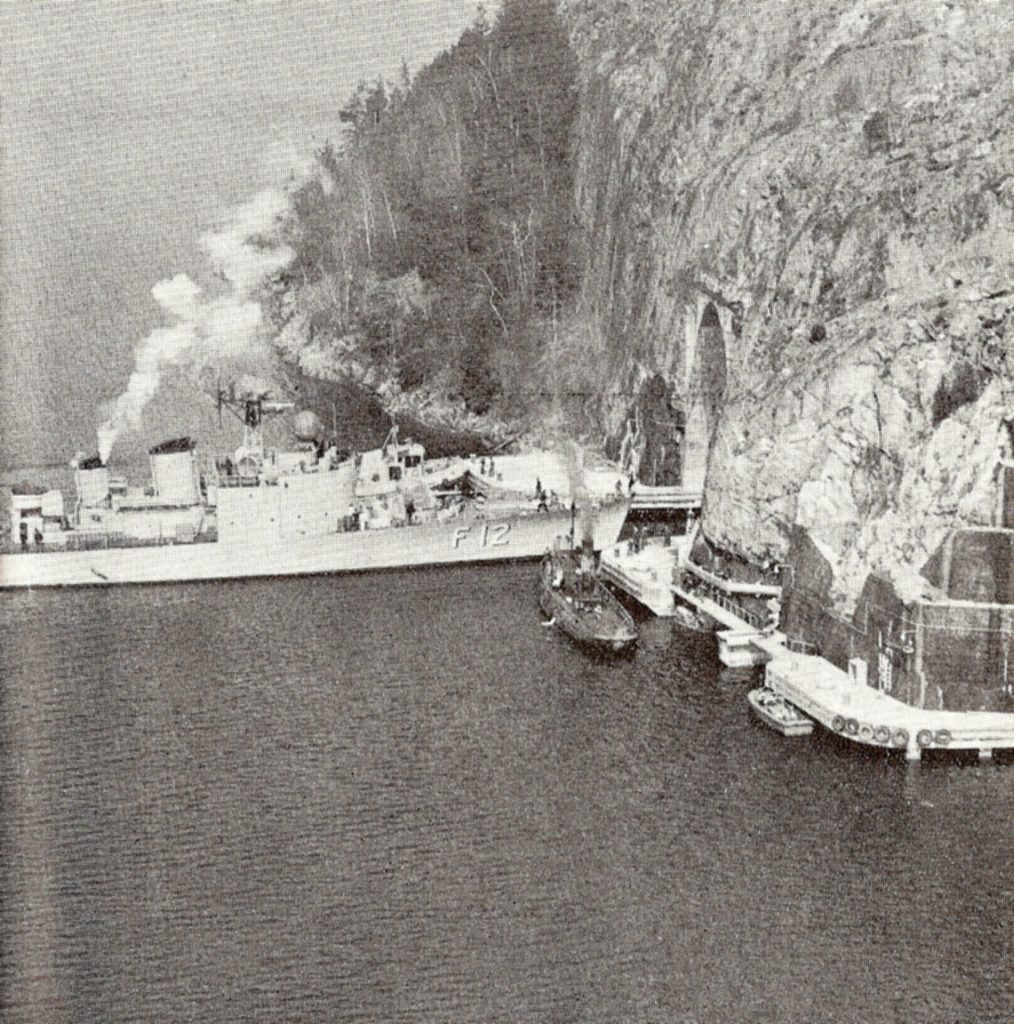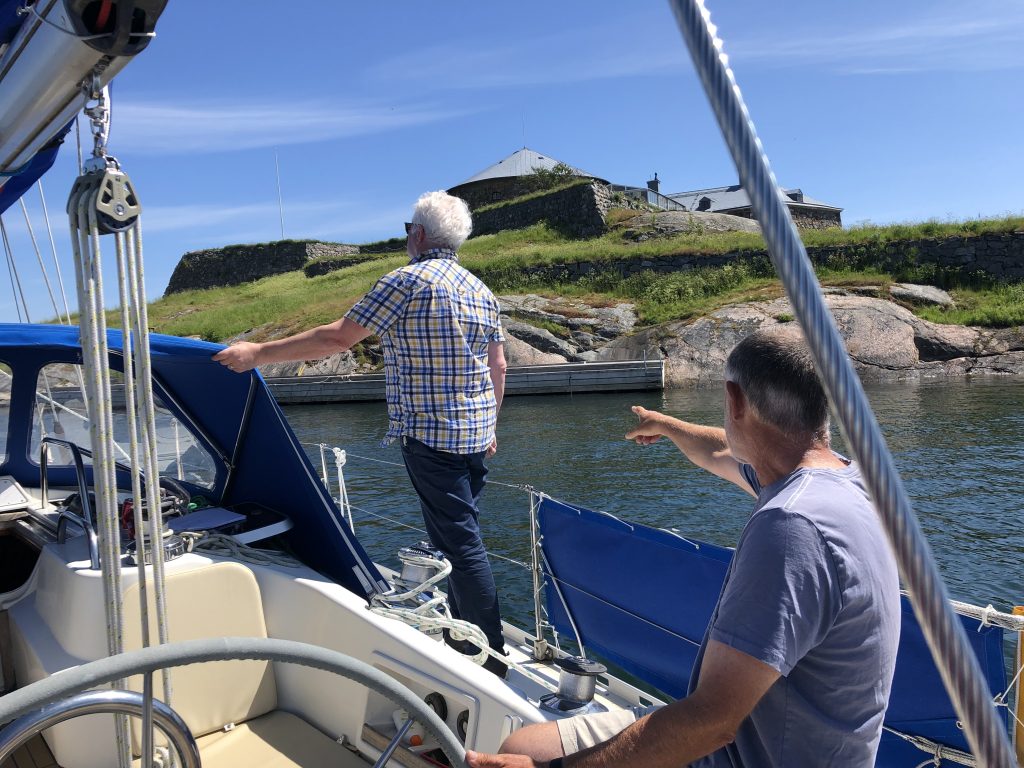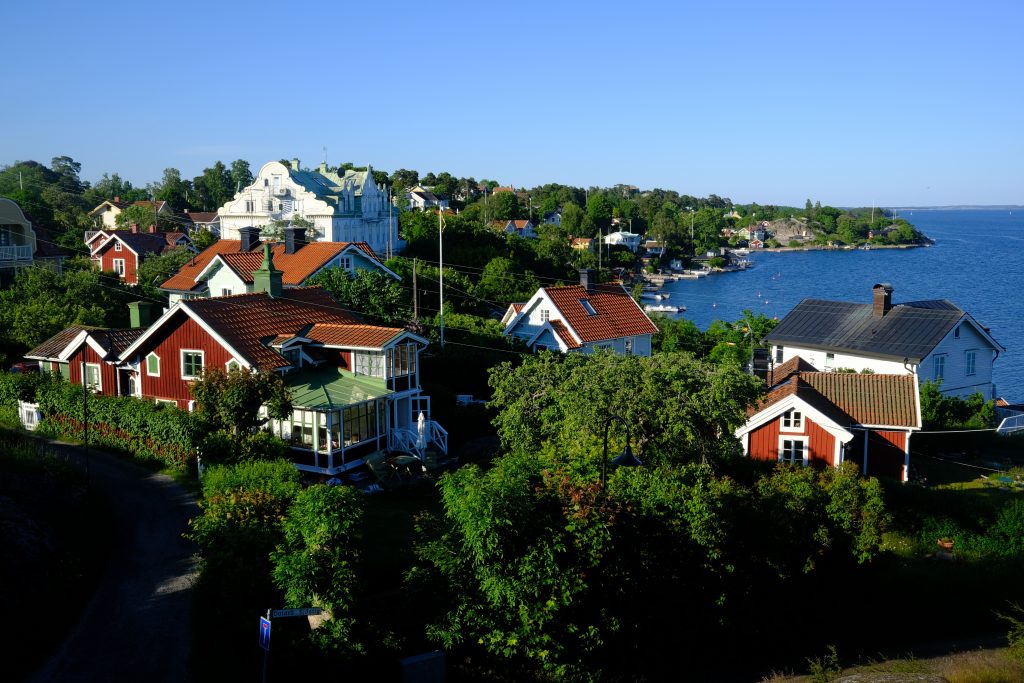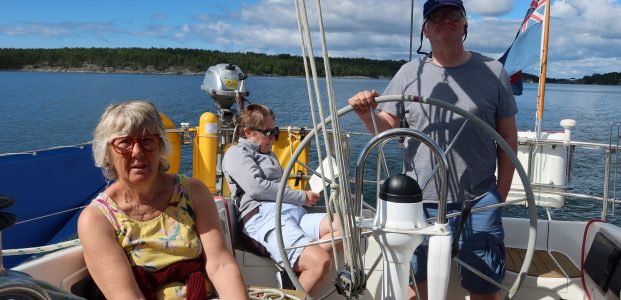The weather cleared today and so it was sunny. Unfortunately the other half of the equation we want for sailing – wind – wasn’t there so we ended up motoring all morning. From Nynashamn we headed north with our eventual target being Dalarö. On the way, we headed past Älvsnabben. This is a small island near Muskö and the name may refer to the fact that it is a natural harbour. The harbour is a natural basin between four islands – Älvsnabben, Bjurshagslandet, Kapellön and Gubbholmen. This is a such a good harbour that it is mentioned as an anchoring place as early as the 13th century in the Danish Census book of King Valdemar II. The Hanseatic League knew of it as well and they called it Elsnaben. The bay then became a base for the Swedish Navy and it is known that the Wasa (now in a museum in Stockholm as it sank just over 1km into its maiden voyage!) was heading for Älvsnabben when it left Stockholm.
Älvsnabben was the base of operation for all navy operations and also for the shipping of Swedish troops to Germany during the Thirty Years War (1618-48) and through the whole 17th century. It had one important flaw though – ice. The further north you are in Sweden, the more likely the waters are to ice up in the winter and embarrassingly they were occasionally caught out by their enemies when they were iced in at Älvsnabben while their more southerly adversaries were able sail around creating havoc while they watched helplessly. As a result high level naval strategic minds realised that they needed to move their main base south and so Karlskrona became the hub of naval operations.
Älvsnabben though got a second wind as a naval site during the Cold War. In 1950 the Swedish Navy started the building of a base that would make any James Bond villain proud. The construction of the Muskö Naval Base was completed in 1969 and during the construction around 1.5 million tons of rock were removed. The base has 3 docks, designed for destroyers and submarines and they are all underground. The base itself is also completely hidden in the rock and has an area of several square kilometres – all apparently connected by 12 miles of underground roads.

All this history makes Dalarö a magnet for divers. The waters around the town are littered with wrecks from all era, many of which are protected wreck sites which can only be visited with a registered diving guide. The importance of these waters is clear as you approach the town – just offshore from the main town is Dalarö Skans. This is a fortress originally built in 1656 and then abandoned by the military two hundred years later in 1856. In a sign of the times, it now operates as an events venue – weddings, conferences and other corporate events; how we have moved on!

Dalarö exudes history from its pores; in 1636, Dalarö it was designated a customs collection point and was then the outermost customs station for any ships heading Stockholm. As they passed Dalarö they would have to pay customs duties on their cargo. The current customs house was erected in 1788. This also led to a pilot station being established on Dalarö during the 17th century to safely get ships through to Stockholm. The prosperity of these times is still evident with extensive villas and houses all over the town – it is apparently one of the most expensive towns outside Stockholm – a very popular second home location.
Once past the castle we headed to the westernmost edge of the town where there is a gasthamn. The season must just be starting as we were directed to a berth by three very enthusiastic students wearing yellow hi-vis jackets. The gasthamn was nicely sheltered and would have been ideal if it wasn’t for motorboaters coming through the Dalarö Canal too fast and creating washes which spilled our gin and tonics ….. Otherwise it was a lovely spot, rounded off with an excellent meal in a restaurant in town that evening.


